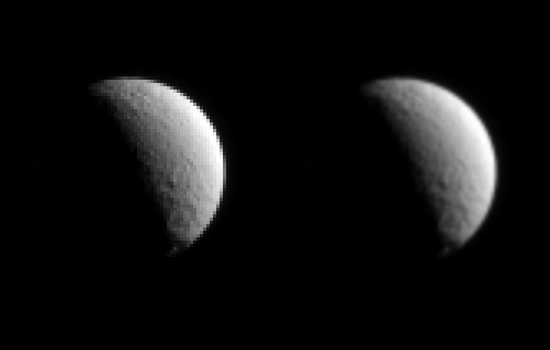Lecture - Image Processing
3. Basic Methods II: Image operations
3.6. Resampling
Images with limited resolution (so to speak every image) are the result of the measurement with a camera of limited resolution. Usually, the number of pixels in X- and Y-direction is the same as the number of pixels in the physical detector (in optical and X-ray astronomy). When an image of low resolution is taken it seems "blocky" and point-like objects turn into squares. A method that is used to make such an image more life-like with little loss of image information is a process called resampling. Increasing the image resolution is achieved by supersampling, decreasing it by subsampling.
The effect of the resampling in the sense of supersampling is a smoothing of the image. The resolution is being increased via the interpolation of the values of the pixels between the "real" pixels of the original image. We have already seen how interpolation works when applying geometric transformations. This time however, pixels are not simply mapped onto a new grid but a large number of new pixels are inserted in between. Like previously the value of the new pixels is calculated via the fractional contribution of all four neighboring original pixels.
The figure below shows a photograph taken of Saturn's moon Tethys by the Cassini orbiter. The left version is of low quality with pixels of visible size. The version on the right hand side was supersampled and consequently smoothed out.

Fig. 3.7: Saturn's moon Tethys. Resampling of a "blocky" image (left) to a more smoothed out version (right). Image Credit: NASA / JPL-Caltech / Space Science Institute, cropping and alterations to pixel size by M. Langejahn.
